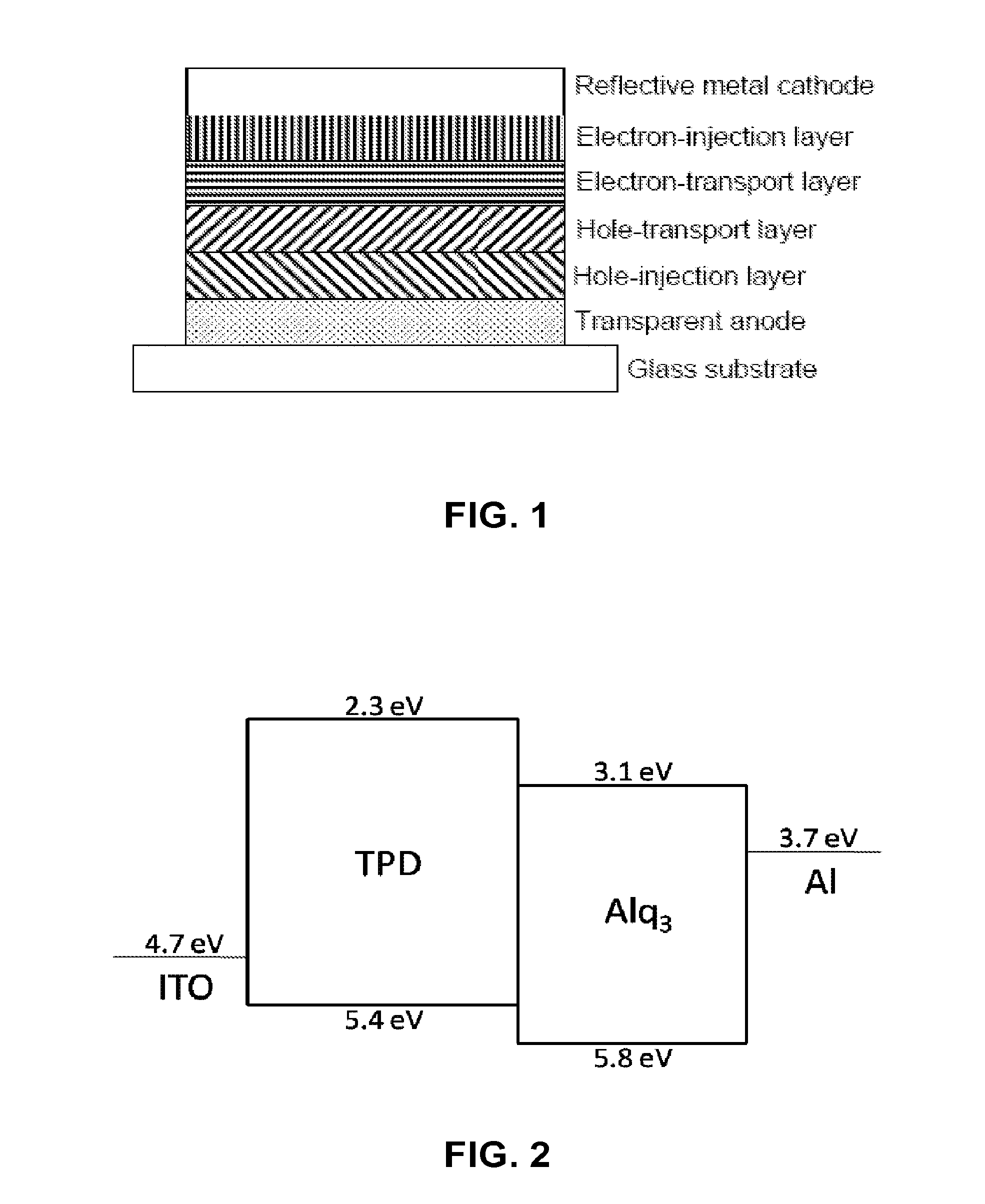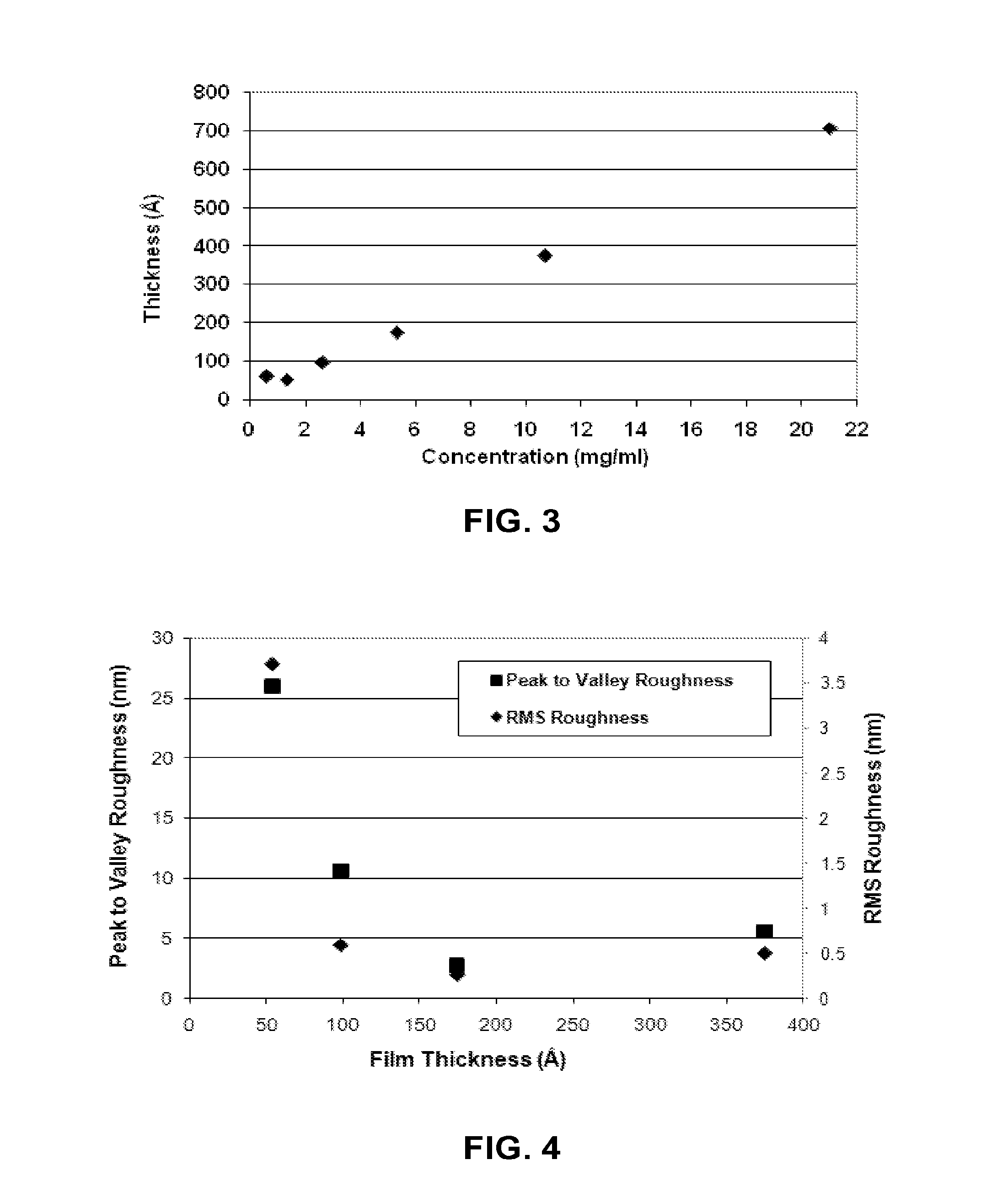Hole Transport Polymer for Use in Electronic Devices
- Summary
- Abstract
- Description
- Claims
- Application Information
AI Technical Summary
Benefits of technology
Problems solved by technology
Method used
Image
Examples
examples
[0045]The following examples are provided to illustrate some non-limiting embodiments of the invention. In the Schemes, exemplary reactions and reagents are shown. Methods of synthesis of various compounds is known in the art.
Synthesis of 9-(4-nitrophenyl)-9H-carbazole (2)
[0046]Sodium hydride (1.85 g, 0.077 mol) was added to a solution of carbazole (11.70 g, 0.070 mol) in N,N-dimethylformamide (DMF) (100.0 ml) and the reaction mixture stirred at room temperature under an atmosphere of dry nitrogen for ten minutes. 1-Fluoro-4-nitrobenzene (7.53 ml, 0.071 mol) was added in portions and the reaction mixture heated under reflux for 16 h, cooled to room temperature and poured onto water (300 ml). The precipitate was collected by filtration and re-crystallized repeatedly from acetonitrile. 1H NMR (500 MHz, CDCl3) δ / ppm: 8.49-8.51 (dt, 2H, aromatic), 8.15-8.17 (dt, 2H, aromatic), 7.81-7.83 (dt, 2H, aromatic), 7.45-7.52 (m, 4H, aromatic), 7.35-7.38 (td, 2H, aromatic).
Synthesis of 4-(9H-carb...
PUM
| Property | Measurement | Unit |
|---|---|---|
| Roughness | aaaaa | aaaaa |
| pressure | aaaaa | aaaaa |
| electroluminescent | aaaaa | aaaaa |
Abstract
Description
Claims
Application Information
 Login to View More
Login to View More - R&D
- Intellectual Property
- Life Sciences
- Materials
- Tech Scout
- Unparalleled Data Quality
- Higher Quality Content
- 60% Fewer Hallucinations
Browse by: Latest US Patents, China's latest patents, Technical Efficacy Thesaurus, Application Domain, Technology Topic, Popular Technical Reports.
© 2025 PatSnap. All rights reserved.Legal|Privacy policy|Modern Slavery Act Transparency Statement|Sitemap|About US| Contact US: help@patsnap.com



